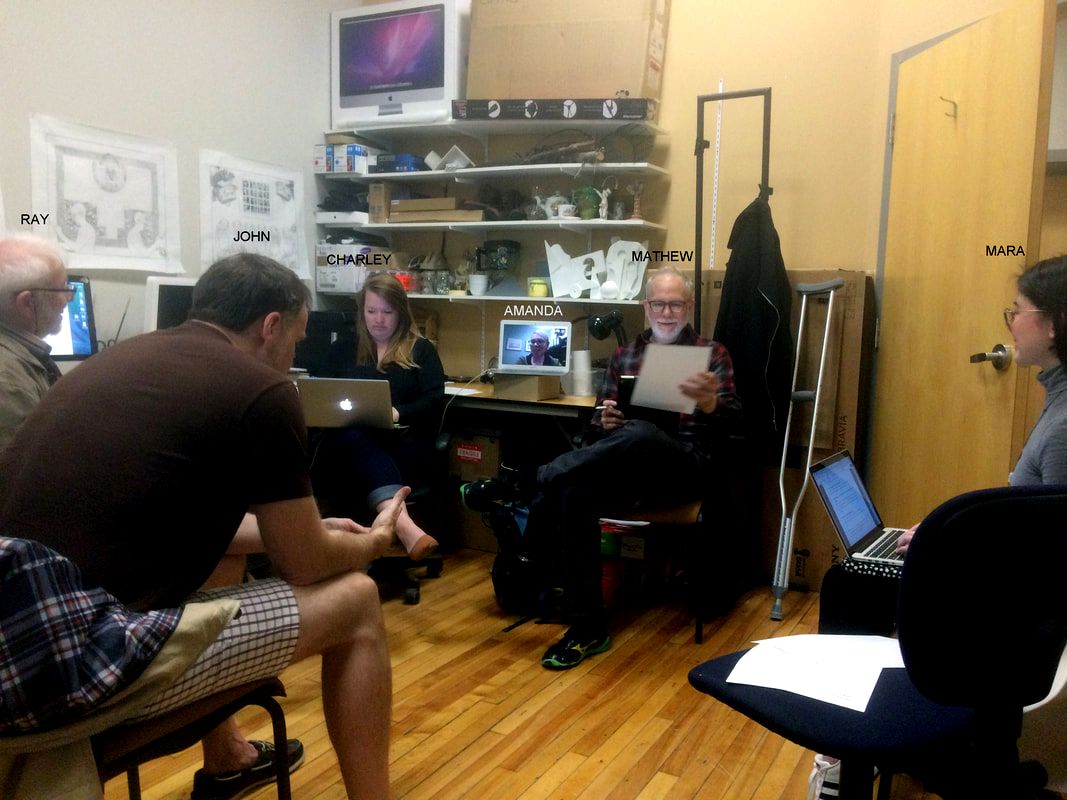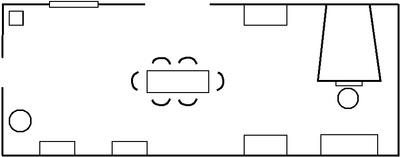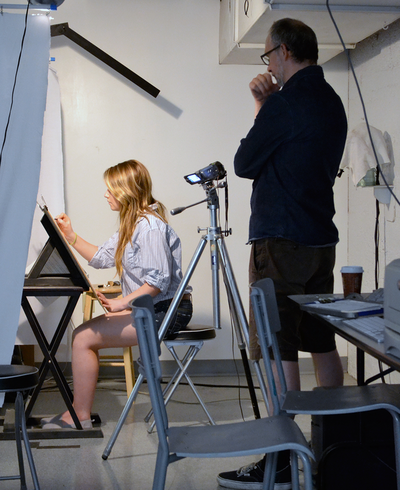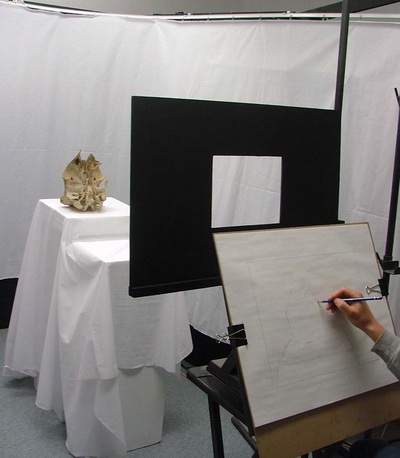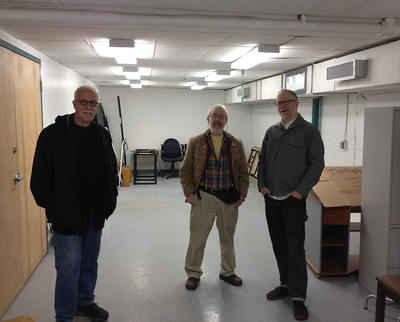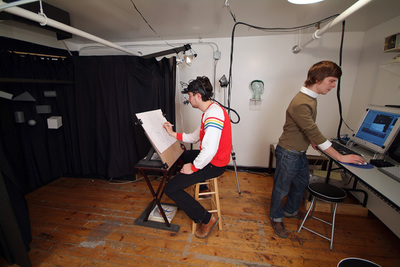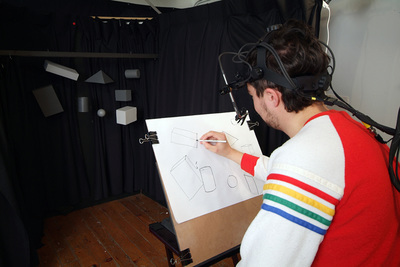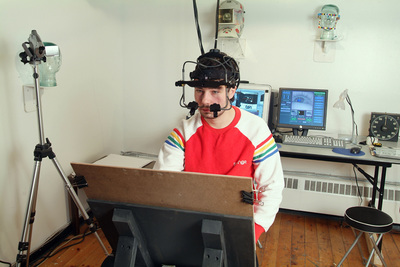Facilities |
Establishing a laboratory in an art school would seem to be something of a contradiction...
|
In terms of working environments, establishing a laboratory in an art school would seem to be something of a contradiction as traditional ideas about the nature of artists’ studios would seem to be antithetical to the needs of scientists. However, when NSCAD University moved into the refurbished, historical Morse's Tea building across the road from the university’s rambling downtown campus, an ideal room was found for the lab on Morse's fourth floor. It provided space with an aesthetic sense compatible with art making that was clean, clear and adaptable thereby rendering it conducive to housing computers and hi-tech equipment.
During the time in Morse, testing for the first longitudinal study was completed. However, by the time data analysis and writing was underway the lab was asked to move across the road to NSCAD's main campus where a basement studio, previously used for stone carving, was refurbished for our use. We gave up our windows and elevator ride for a long narrow space that, in many ways, was better suited to our needs.
Following life in the basement and for the period between research grants, the lab's activity was moved to Dalhousie University where discussions and technical prototyping occurred in anticipation of new studies. Our successful SSHRC Insight Grant in 2014 precipitated another move, this time to NSCAD's Academy Building at the foot of Citadel Hill. While no views were afforded of the knoll and the Old Town Clock, the latest space offers conditions appropriate to the control of lighting and ideal for new experiments utilizing digital pen displays and remote eye-tracking.
During the time in Morse, testing for the first longitudinal study was completed. However, by the time data analysis and writing was underway the lab was asked to move across the road to NSCAD's main campus where a basement studio, previously used for stone carving, was refurbished for our use. We gave up our windows and elevator ride for a long narrow space that, in many ways, was better suited to our needs.
Following life in the basement and for the period between research grants, the lab's activity was moved to Dalhousie University where discussions and technical prototyping occurred in anticipation of new studies. Our successful SSHRC Insight Grant in 2014 precipitated another move, this time to NSCAD's Academy Building at the foot of Citadel Hill. While no views were afforded of the knoll and the Old Town Clock, the latest space offers conditions appropriate to the control of lighting and ideal for new experiments utilizing digital pen displays and remote eye-tracking.
Academy Building (2014 – Present)
May 2019 Lab meeting with Amanda via video link to Nippissing University: Charley Young (Lab manage), Amanda (via video link), Mathew, Ray, John and Mara (Dalhousie BSc Honours).
Duke Campus - Halifax (2007 – 2013)
group meeting new lab layout Mathew monitoring test drawing set up B, R & M ready to vacate
Morse's Tea Building - Halifax (2005 – 2007)
NSCAD RA Daniel Hutchinson monitoring test
Nipissing University Lab - North Bay 2019-2021
Nipissing RA Brianne Morris monitoring participant
